If you have had sciatica, then you know how debilitating it can be. Sciatic pain affects the sciatic nerve which runs through the piriformis, a small, powerful muscle within the glutes, and goes on to the legs and the feet. The piriformis is responsible for lateral rotation of the hips. But if it is too tight, it exerts pressure on the sciatic nerve, causing extreme pain, numbness or tingling in the lower back and legs. You can get relief by trying out the following stretches.
Sciatic Nerve Stretches
Start by talking to a trainer or physical therapist for guidance on the best exercises to relieve your sciatica nerve pain.
1. Downward-Facing Dog
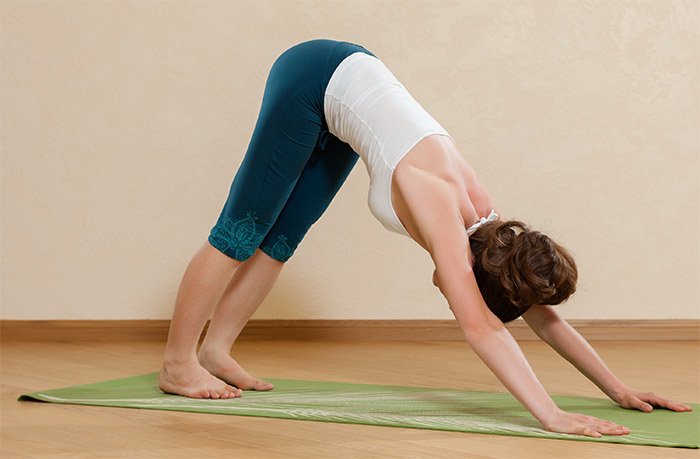
If you have tight hamstrings and your core and back muscles are weak, you are likely to suffer from sciatica pain. The downward-facing dog is a hamstring stretching exercise that also works on the core and lower back muscles.
- Start in a squatting position; then stretch your hands ahead with fingers facing forward.
- Lift your hips, as you support yourself on your hands and feet. Push your hands slightly ahead of your shoulders so that your body and legs form an inverted "V", with your head between your arms.
- While you may find it difficult to keep your heels on the floor, keep trying to maximize the stretching of your hamstrings. But don’t stress yourself at the beginning. You will achieve it with time.
- Hold the pose for up to three minutes.
2. Cobra Pose
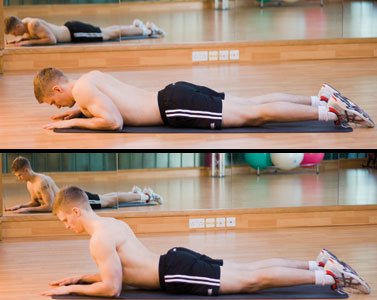
If you spend a lot of time sitting, you fold your body forward, which exerts more pressure on the sciatic nerve. But cobra pose, one of the sciatic nerve stretches, can help you undo this problem by opening the shoulders and chest and stretching the front of your hips and the hip flexors. This relieves excess pressure on the disks.
- Lie on your stomach with hands on the sides, and legs stretched straight to the back.
- With palms pressing on the floor and the folded arms against the sides of your chest, lift your head, chest and torso.
- You will feel stretching in the abdomen, quads, and hip flexors.
- Hold the pose for up to 1 minute.
3. Low Lunge
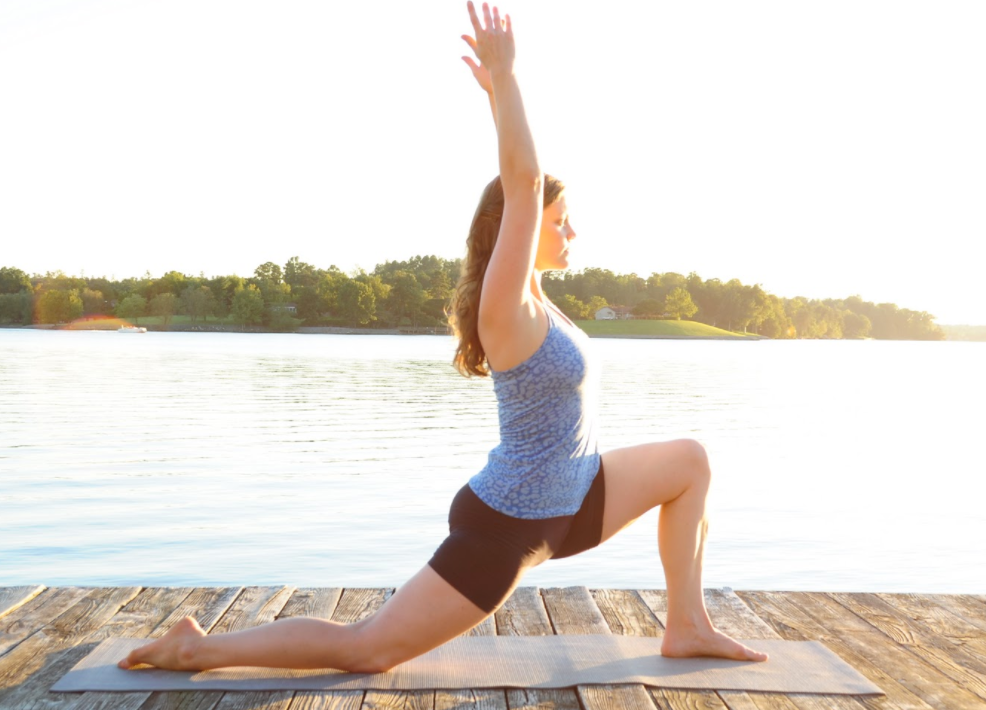
The low lunge stretches and opens your hips and hip flexors. It also works on the stabilizer muscles of your core.
- Start in a lunge position with the right leg in front and the other extended behind.
- Lower your left leg towards the floor and raise your arms skywards.
- Hold the pose for ½ minute; then repeat with the other leg.
- You will feel the stretching in the front of the lowered leg as well as the hip flexor.
4. Seated Groin Stretch
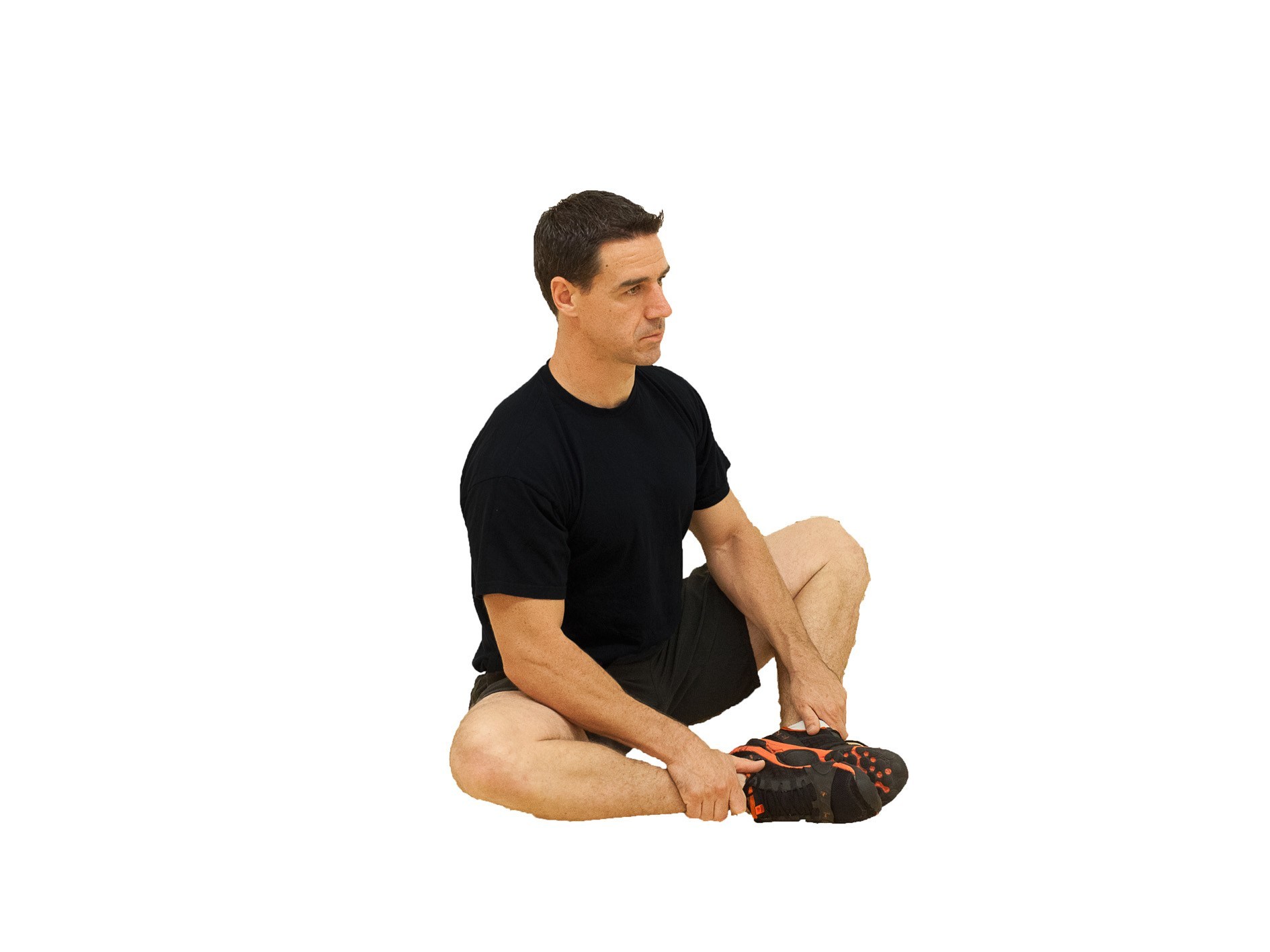
- Sit on the floor with your back straight and legs bent so that the heels are together and nearest to your crotch.
- Holding the front sides of your feet in your hands, bend forward so that you are pushing your knees outwards.
- Hold the pose for up to one minute.
- As your flexibility improves, work towards stretching your knees until they touch the floor.
5. Dead Bug
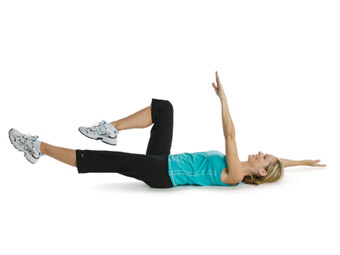
This is another one of the great sciatic nerve stretches that also increase core strength. The exercise realigns your spinal alignment and relieves compression on the sciatic nerve.
- Lie on your back and raise both your legs skywards. Lower the lower parts of your legs to 90 degrees.
- Straighten your right leg and bring it down until it almost touches the floor. At the same time, raise your left arm towards the right side of your right knee.
- Hold the pose for two seconds.
- Bring your right leg back up to form 90 degrees at the knee and lower your arm. Repeat the pose for the other side.
- Repeat the exercise 10 to 15 times.
6. Kneeling Arm and Leg Reach
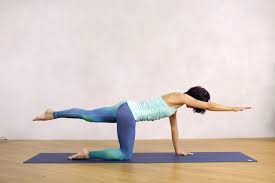
- Get on your knees and hands so that they both form 90 degrees with the floor.
- Maintaining a straight back, engage your core as you extend your right leg backward and your left arm forward.
- Hold the posture for one breath.
- Return to the beginning position; then repeat with the other side.
- Repeat the exercise 10-15 times.
7. Cat-Cow
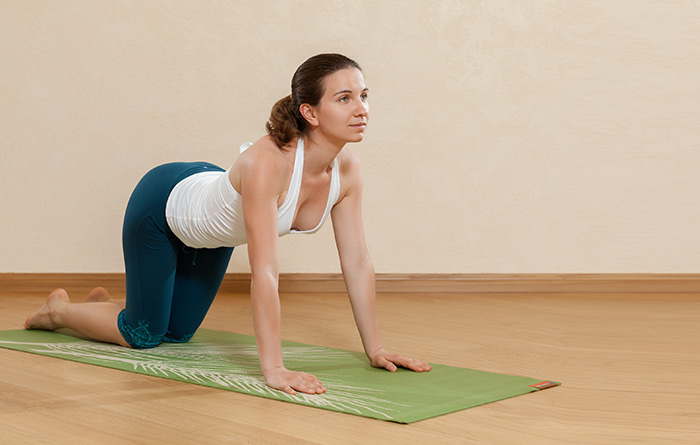
Cat-cow pose is another one of the great sciatic nerve stretches.
- Get on your knees and hands at body width.
- As you inhale, lift your chin and chest and simultaneously arc your belly downwards.
- As you exhale, engage your abs, push your belly towards the spine and arc your back skywards.
- Repeat the exercise for 15-20 times.
8. Eye of the Needle Stretch
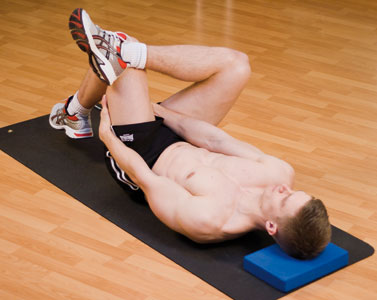
Eye of the needle is a stretch that works on the piriformis muscle.
- Lie on your back and raise your knees up.
- Cross your left ankle over the right knee and hold your right hamstring in both your hands and pull gently. Keep your head on the mat.
- Hold the pose for up to one minute; then repeat with the other leg.
9. Self-Trigger-Point Therapy
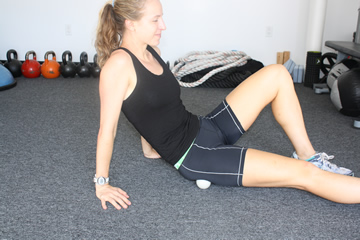
A self-trigger-point therapy using a tennis or lacrosse ball is an effective way to achieve sciatica pain relief.
- Once you have the ball, locate one painful point in your glutes. Placing the ball on this spot; lower your body so that you are sitting on the ball.
- Hold the posture for ½ to 1 minute or until there is noticeable relief of the pain. Do the same with another pain point and so forth. You do this exercise for a total of 5 to 10 minutes.
10. Knee to Opposite Shoulder
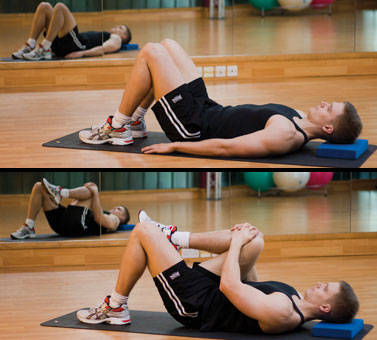
This stretch loosens piriformis and gluteal muscles, thereby relieving sciatica pain.
- Lie on your back, legs together and extended, and feet facing upwards.
- Bring your right leg towards the chest and clasp both hands around the right knee.
- Slowly bring your right knee towards the left shoulder and hold it in this position for ½ minute. Avoid overtaxing yourself. The stretch will give you a relieved feeling.
- Let go and return your leg to the floor.
- Repeat the stretch 3 times; then switch to the other leg.
Other Tips to Relieve Sciatica Nerve Pain
Besides sciatic nerve stretches, other home remedies exist which you can use to relieve sciatica pain. The remedies include:
- Over-the-counter anti-inflammatory medications
- Applying cold and hot packs to the pain site
- Wearing a brace to support the lower back
- Getting adequate sleep
- Yoga
- Quitting cigarette smoking because you are more likely to suffer from back pain if you smoke
- Weight reduction if you are overweight or obese
- Maintaining good posture
- Lifting and carrying objects properly
- Avoiding sitting for long periods
